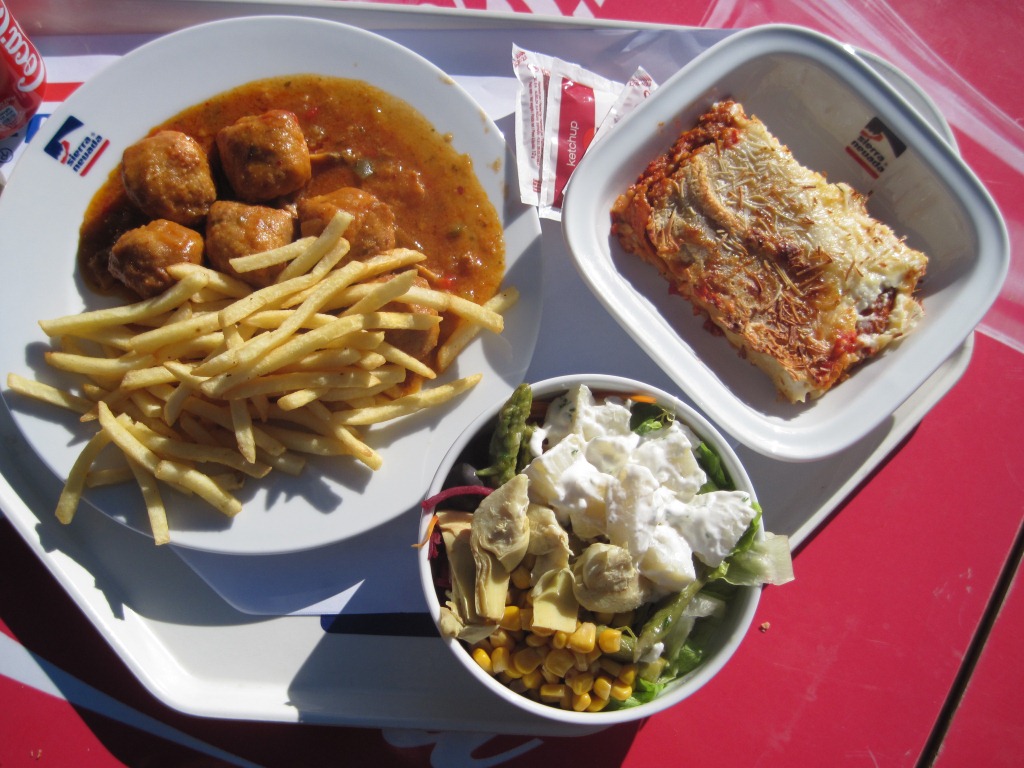When it comes to language, food is often one of the first topics that people want to learn about. Understanding meals in other cultures enriches our culinary experience and helps us connect with others through shared tastes and flavors. One such meal that holds a special place in many cultures is lunch. In Spanish, lunch is referred to as "almuerzo," and this mid-day meal carries its own significance and traditions across Spanish-speaking countries.
Lunch in Spanish-speaking countries is more than just a meal; it symbolizes the importance of family, socializing, and taking a break from the hustle and bustle of daily life. In many cultures, lunch is the largest meal of the day, often enjoyed with family or friends, and is a time to relax and recharge. The variety of foods served for lunch can vary widely depending on the region, making it an exciting culinary adventure.
For those looking to enhance their Spanish vocabulary, understanding the term "almuerzo" and its context can pave the way for deeper conversations about food and culture. This article will delve into all aspects of "lunch in Spanish," exploring its meanings, traditions, and popular dishes that are commonly enjoyed during this important meal.
What is Lunch in Spanish?
The word "lunch" translates to "almuerzo" in Spanish. It is derived from the Latin word "merere," which means to earn or deserve. In many Spanish-speaking countries, lunch is a significant meal, often consisting of multiple courses. The time and manner of having lunch can vary greatly from one country to another.
How is Almuerzo Different Across Countries?
In Spain, lunch is typically served between 1:00 PM and 3:00 PM, and it often includes a substantial meal that may consist of a starter, main course, and dessert. In contrast, countries like Mexico may have lighter lunches or snacks, with the main meal being served later in the evening. Here are some examples of traditional lunch foods from various Spanish-speaking countries:
- Spain: Paella, Tortilla Española, Gazpacho
- Mexico: Tacos, Enchiladas, Pozole
- Argentina: Asado, Empanadas, Milanesa
- Chile: Pastel de Choclo, Completo, Cazuela
Why is Almuerzo Considered the Most Important Meal?
In many cultures, especially in Spain and Latin America, lunch is often the largest meal of the day. This is due to several factors, including the historical agricultural lifestyle, where families would gather for a hearty meal to fuel their day. It also emphasizes the value placed on family and social gatherings.
What are Common Almuerzo Dishes?
Almuerzo can include a wide array of dishes, varying by region and personal preference. Here are some common dishes you might encounter during lunch in Spanish-speaking countries:
- Paella: A famous rice dish from Spain, often made with seafood, chicken, and vegetables.
- Tacos: A traditional Mexican dish made with tortillas and various fillings.
- Asado: A barbecue-style meal popular in Argentina, featuring various cuts of meat.
- Empanadas: Baked or fried pastries filled with meat, cheese, or vegetables.
How Does Almuerzo Fit into Daily Life?
In many Spanish-speaking countries, lunch is more than just a meal; it is a cultural event. People often take time off work to enjoy their lunch, and it is common to see families and friends gathering around the table to share food and conversation. This break from the daily grind not only allows for nourishment but also fosters relationships and community.
What Time is Almuerzo Typically Served?
The timing of lunch can vary significantly depending on the country and local customs. In Spain, lunch is usually served around 2:00 PM, while in Latin America, it may be served earlier, around noon. In some regions, it is common for businesses to close for a few hours during the lunch period to accommodate this important meal.
How Can I Incorporate Almuerzo into My Daily Routine?
For those looking to embrace the Spanish culture surrounding lunch, consider setting aside a specific time each day to enjoy a leisurely meal. Prepare traditional dishes or explore new recipes to make your lunch experience more authentic. You can also invite friends or family to join you for a meal, creating a communal atmosphere that reflects the values of Spanish-speaking cultures.
What are Some Tips for Learning About Almuerzo?
To immerse yourself in the world of "almuerzo," here are some tips to enhance your understanding and appreciation:
- Explore Spanish cookbooks or online recipes for traditional lunch dishes.
- Join a cooking class focused on Spanish or Latin American cuisine.
- Visit local restaurants that specialize in Spanish or Latin American food.
- Engage with Spanish speakers and ask them about their favorite lunch traditions.
Conclusion: Why Lunch in Spanish Matters
Understanding lunch in Spanish, or "almuerzo," reveals a rich tapestry of cultural practices, flavors, and social connections. This mid-day meal is not merely about sustenance; it is a celebration of life, family, and community. Whether you are enjoying a simple meal at home or indulging in a vibrant feast with loved ones, taking the time to appreciate lunch in Spanish can deepen your connection to the language and its cultural roots.
You Might Also Like
When Coconuts Fly: The Unlikely Story Of Hitting A Player With A CoconutPomeranian Husky Mix: The Ultimate Companion
Unveiling The Rarest Fortnite Skins: A Collector’s Dream
Mariah Carey: The Enchanting Star Of Film And Music
Fluffy Slime: The Ultimate Guide To Making Your Own
Article Recommendations
- Chromatopia Ticket Prices
- Brandy And Billy
- Kim Young Dae Girlfriend 2024
- Dj Qualls Movies And Tv Shows
- The Addams Family Movies Where Are They Now
- Luke Combs Liberal
- Masa 49 Come
- Jennifer Tedmori
- Ryan Paevey
- Who Is Kris Jenners Husband


